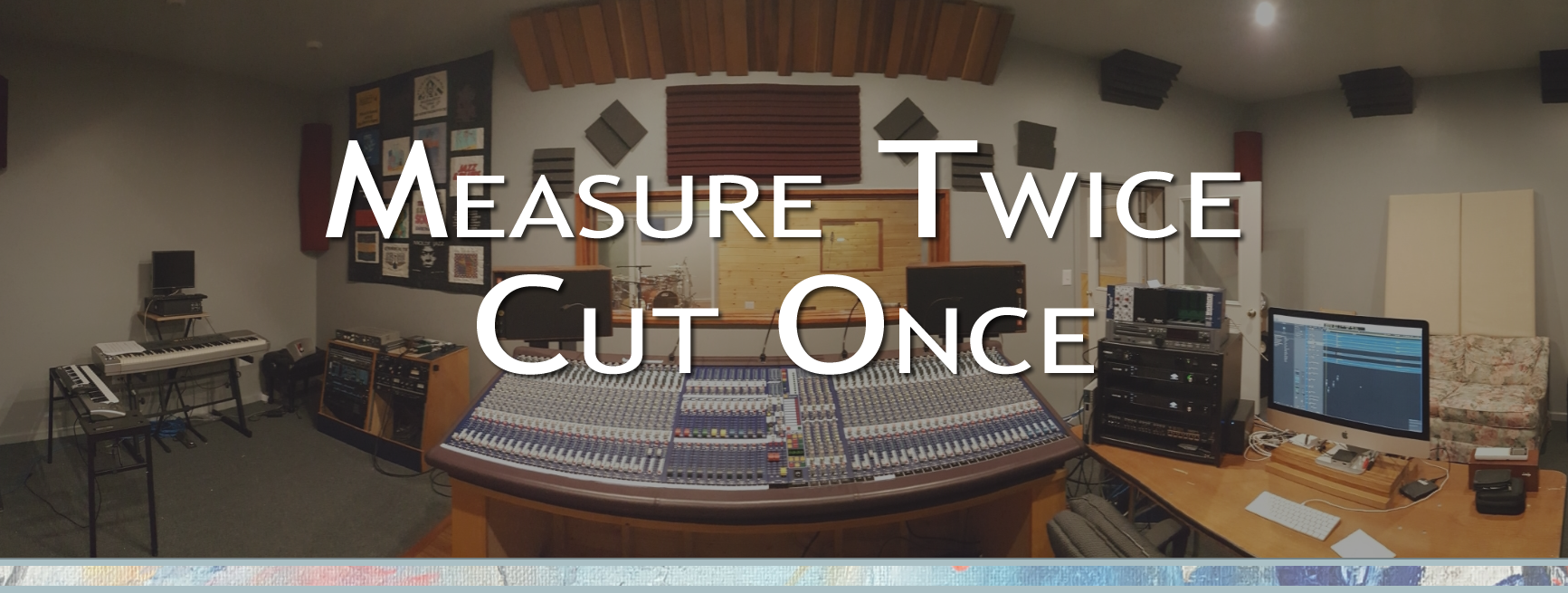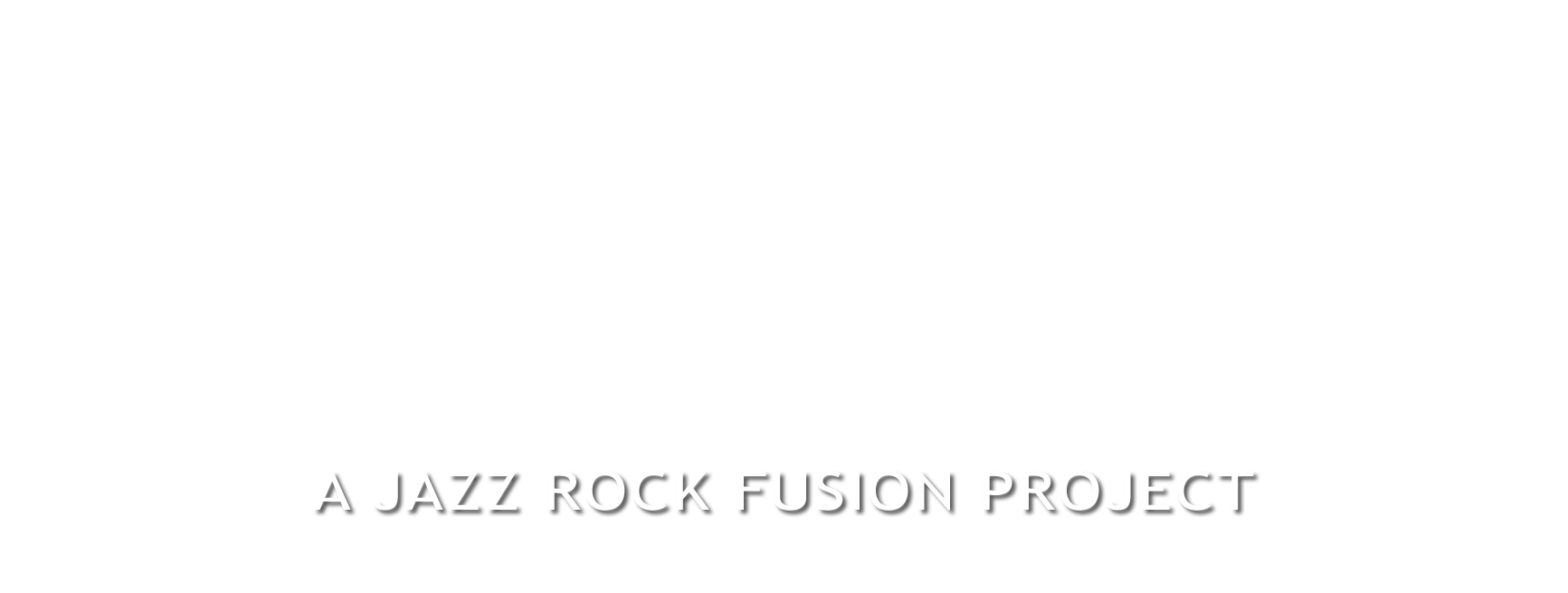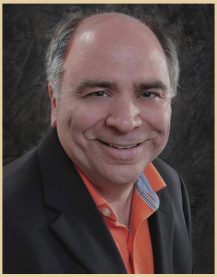
“Measure Twice, Cut Once” my most recent music project. These songs are a collection of eccentric songs reminiscent of jazz/rock fusion and progressive rock from the 1970s. The compositions are written for a 5-piece jazz/rock band (acoustic piano, electric keyboards, guitar, bass and drums). All the songs have arrangements that include a mix of bold melodies, modal harmonies, complex and sometime’s odd time signatures as well as improvisational sections. Along with great musicians I am utilizing everything possible in the studio to create music that is fun for the listener to experience.
I am still in the writing and recording process on these tracks with mixing and mastering ahead of me.
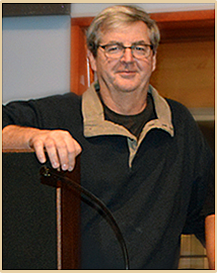
My long time friend, audio engineer and drummer Harold Smick is the engineer and co-producer for “Measure Twice, Cut Once”. Harold has spent that last 30 years in the international jazz world as the live audio engineer and road manager for the jazz rock band “Blood Sweat & Tears”. We are recording in Harold’s studio “Amwellbury Farms Studio” on a Logic Pro system.
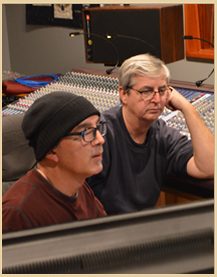
I am very fortunate to have Harold’s friend Grammy nominated bassist, composer, producer and engineer Ric Fierabracci helping as a consulting engineer as well contributing his talents on bass.
Ric Fierabracci has performed, recorded for artists like Billy Cobham, Jeff Lorber, Chick Corea Electrik Band, Blood Sweat and Tears , Dave Weckl, Lao Tizer Band, Gary Husband, Dean Brown, Steve Smith, Vinnie Colaiuta, Tom Jones, Stevie Wonder, Special EFX, Guthrie Govan, Bill Evans and Andy Summers.
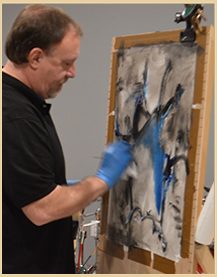
As part of the music project I have asked painter John Larsen to contribute his talents. During conversations with John I knew that he like to paint to music. I have asked John to choose various instrumental solos in each song to create non-representational/abstract paintings. These paintings will be made into videos of the final paintings and including John’s process of painting.
“A painter paints pictures on canvas.”
“A musician paints pictures on silence.”
– Leopold Stokowski
This player has all the current songs. As we are still in the recording process, most of these songs are in mock-up form.
The Songs
Alakazam
Running Time 9:15
About Alakazam
Alakazam was the first song I wrote for this project. After a conversation with my wife about writing songs, she mentioned an interview with John Oates where he wrote a song with the help of a sequencer. So that I night I tried several patterns on my sequencer program. One pattern interested me as it sounded very close to a Phrygian Dominant scale. With just a small adjustment to the sequencer tuning I had a Phrygian Dominant scale and thus Alakazam was started. After several weeks working on the songs intro section, my children mentioned that the music sounded eastern so I asked them what they would call the song, and they came up with the title Alakazam.
After a few conversations with Smick about the project, he emailed and said that Ric Fierabracci and Dylan Elise (bassist & drummer of Blood, Sweat & Tears) had listened to the song and would be willing to record the rhythm track when they were in the area. With this news I began to move the original audio files from my Cakewalk Sonar to the studio Logic Pro system and that began my crash coarse in learning Logic Pro. A few weeks later we were in the studio with Ric and Dylan. With Ric helping with the Logic Pro and Dylan on the drums we were off. Dylan was amazing! He asked for the bass charts to record with. As we didn’t have anything to hold the music Dylan took out his chewing gum and pasted the charts on the wall. What you hear on the song is basically Dylan’s first take.
After Dylan’s session, I worked on the song’s intro and ending in the studio. A few months later when I had everything ready for the bass track, Ric recorded his tracks back at his studio. Upon hearing his solos I was overjoyed. The original arrangement had a bass solo at the end of the song but one night on the drive home from the studio I imaged what if the song started with the base solo. The next night I placed the solo at the beginning of the tune. Smick and I listened with the bass in the front and it changed the song completely.
We are still in the process of mix down but we are getting close to a final version.
The Musicians
Jim Combs – Acoustic Piano, Synthesizers, Acoustic & Electric Guitars, Sound Effect (Cymbals, Floor Toms, Wind Chimes, Springs, Bag Of Curtain Rings & Cat Food Bowl of Screws and Washers)
Ric Fierabracci – Fretted Bass, Fretless Bass
Dylan Elise – Drums
Harold Smick – Recording Engineer
Featured Soloist
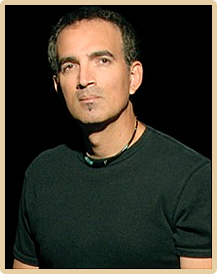
Bassist Ric Fierabracci
Ric has performed, recorded and run the gamut for artists like Jeff Lorber, Blood Sweat and Tears, Chick Corea Electrik Band,Billy Cobham, Dave Weckl, Lao Tizer Band, Gary Husband, Dean Brown, Steve Smith, Vinnie Colaiuta, Mitchel Forman, Nachito Herrera’s Cuban Trio, Raul Pineda, Chad Smith’s Bombastic Meatbats, Stanley Clarke, Brett Garsed, Phil Turcio, Special EFX, Guthrie Govan, Mike Miller, Scott Henderson, George Whitty, Joel Hoekstra, Tom Coster, Marion Meadows, Andy Summers (with Sting as a special guest), Planet X, Eddie Jobson’s UK, Frank Gambale, Curved Air’s Sonja Kristina, Adrian Belew to Pop artists: Sir Tom Jones, Bo Bice, Stevie Wonder, Japanese Mega Star – Misia, Jennifer Paige, Sophie B Hawkins, Euge Groove, Bill Evans and others. Ric has also recorded many tracks for the “Guitar Hero” Video games. His Studio work has also included bass tracks for the CBS Hit TV series “Without a Trace”
www.facebook.com/ric.fierabracci
Alakazam The Painting
by John Larsen
Photos
Good Shoes
Running Time 7:18
About Good Shoes
Good Shoes was the third song I wrote for this project but the second that we started recording in the studio. The melodies for Good Shoes were in my head (and on my fingers – I wrote them on the guitar) for months before I started the project. For a harmonic structure I went back to basics (sort of) I, IV, V. The second melody didn’t have a harmonic center either so I used a chromatic scale from e to c to give it motion. The first melody always had a 5 beat feel so I made this part of the song in 5/4 but the second melody needed to be in 4/4 to give it the forward motion.
When I started planning the song I wanted to to have a section that incorporated polyrhythm. As the song is called “Good Shoes” I decided to add the sound of tap dancing (instead of traditional percussion).
The original ending of the song was going to use the chromatic scale in the bass as an ostinato for the drums to play a solo over it until Smick asked Ken Gioffre to work on the tune. In viewing Ken’s solo in Surreptitious at the Java Jazz Festival in 2017 with Blood Sweat & Tears I decided to write a chord progression that would give Ken a lot of harmonic room to solo over as well as fit his style of playing. I also wanted the chord progression to work over the chromatic scale while in counter point to the bass line. When Ken came to the studio he nailed the solo right away.
While writing Good Shoes I started listening to the “The Beach Boys” Pet Sounds for the studio sounds and found myself wanting to write and record tight vocal harmonies. During a conversation with Scott Seabock he mentioned that not all vocals need to have words. So I decided to record Scott singing the chord progression under Ken’s solo in the end of Good Shoes.
We are still recording parts for “Good Shoes”.
The Musicians
Jim Combs – Acoustic Piano, Synthesizers, Electric Guitar, Tap Dancing (bottle caps & plastic thimble)
Ken Gioffre – Alto Sax
Bart Yoder – Fretted Bass
Dylan Elise – Drums
Scott Seabock – Vocals
Harold Smick – Recording Engineer
Featured Soloist
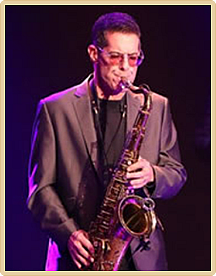
Saxophonist Ken Gioffre
Saxophonist Ken Gioffre has recorded for the Sony, Universal, Blue Note-Manhattan, MCA, Dennon, and Sire labels. He has also performed and recorded for the ABC, NBC, CBS, A&E, HBO, ESPN, and BET television networks.
Mr. Gioffre appeared nightly on the television show New York at Night and has also appeared on The Tonight Show with Jay Leno, NBC’s Today Show, HBO’s The Sopranos, A &E’s Breakfast With The Arts, Fox News’ Fox and Friends, Sinbad’s Soul Music Festival as well as the movie Last Holiday starring Queen Latifa.
In addition to his national and international tour experience, he has performed or recorded with Nancy Wilson, B. B. King, Dianne Reeves, Tito Puente, Mose Allison, Ruth Brown, The Temptations, Cab Calloway, Dr. John, Michael Bolton, Queen Latifa, Lou Rawles, Martha Reeves, Donny Osmond, Jimmy Webb, Buddy Guy, Ben E. King, The Wynans, Kid Creole, Toots Thielmans, Dave Kozz, Eddie Money, KC and the Sunshine Band, John Pattitucci, Will Lee, Randy Brecker and many, many others.
Mr. Gioffre currently tours and records as saxophonist for Smokey Robinson.
Photos
Follow The Money
Running Time 6:34
About Follow The Money
This recording is a work up track of the song we are still recording final tracks.
Follow The Money was the fourth song I completed writing for this project. During the writing of Alakazam I used a suspended chord with a flatted 2nd in the bass under a piano run. I liked how the root of the chord and the flatted second resonated together so I started playing with several of these chords together and that’s how I came up with the chord statement theme. With the dissonance of the notes I wanted a simple and bold rhythm like a fanfare. This three chord theme is in 5/4 time, the first two chords are two beats each and the third chord holds for three beats. I like odd meter as it helps in the composition tension and release but in this project instead of odd meter over eighth notes (5/8, 7/8 or 9/8 as is often used in progressive rock tunes) I’m primary using odd meter over quarter notes as it feels more like the pulse of a 4/4 tune.
The main melody of the song is in 7/4 and 9/4 with the ending of the song with the improvisations in 6/8. I differentiate the three verses of the main melody by instrumentation. The first is played by piano and sax, the second the nylon stringed guitar is added with a variation of the melody and an the introduction of harmony in the melody line and the third verse an accordion is added and still another variation of the melody through harmony.
After the melody I have a small section where the accordion and guitar foreshadow their up coming improvisational solos, then the three chord fanfare reprises and then introduces the final section that includes improvisational solos of the nylon stringed guitar and the accordion.
The title of the song came from a conversation with our children about history specifically the Roman rule of Egypt and to understand many reasons for events in history you just need to “follow the money”. This concept was introduced to Sheila during a week long screenwriting retreat with William Kelly a Academy Award winning screenwriter (1985 movie “Witness,” directed by Peter Weir and which starred Harrison Ford and Kelly McGillis.), television writer ( “Gunsmoke,” “Bonanza,” “Kung Fu,” “Serpico,” “Petrocelli”, “The Dukes of Hazzard.”…) and novelist. Mr. Kelly was referring the the catchphrase that was made famous by the motion picture All the President’s Men, however he suggested it can be used in almost any mystery as a way to find the truth. Since this time Sheila and I have found that it applies to almost all conflicts in life.
more to come
The Dogs Bark But The Caravan Moves On
Running Time 8:30
The Dogs Bark But The Caravan Moves On
This recording is a work up track of the song
In the 90’s I heard a motivational speaker give a talk called “Let The Dogs Bark, The Caravan’S Moving On” and for years I have used that expression (or proverb), “The dogs bark, but the caravan goes on”. Of course meaning; moves ahead, no matter the criticism it may attract. So one day when SR and I were driving to lunch we were talking about what have been teaching CC & Peter. We have always wanted them to follow their own path or passion and Sheila brought up we need to teach them the philosophy “to let the dogs bark, but the caravan goes on” and I said there’s my next song title.
The music came to me a few months earlier when I was experimenting with a program that converts jpg images to sounds via s soft synth program. I created some time lapse photos of flashlights in the dark then converted those images to synth sounds (you hear them in the beginning and throughout the song). Then I wrote a small little tune to go with the sounds. So I pulled up that little 90 minute piece of music and started working on it for this project. Most of my songs have taken a few weeks to get them to a place where I can share them with Harold to listen to. But this tune possessed me and in three nights it had written and recorded it in mockup form.
As of now it still needs recordings of a real drummer, bassist and horn.
Getting Back Up
Running Time 6:29
About Getting Back Up
This recording is a work up track of the song
Watching John Wayne – not completed
Dancing In The Rain – not completed
